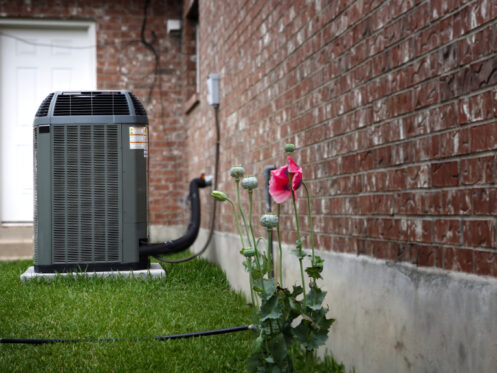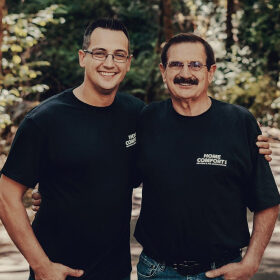Are you looking for ways to save on your electricity bills this summer? Even though Oregon summers are typically fairly mild, air conditioning still typically uses far more energy than anything else in a home. Depending on the size of your house and how efficient your AC or heat pump is, it’s likely that you pay at least a few hundred dollars a year just to keep your home cool.
While replacing an aging AC or heat pump that isn’t all that efficient is the best way to save money, scheduling a tune-up or maintenance service this spring can also make a huge difference. HVAC systems simply never function as efficiently or work as effectively without regular maintenance, and this article will explain what an AC tune-up involves and the benefits it can provide both for your finances and your comfort.
Complete Inspection
One essential part of an AC tune-up service is performing a complete inspection of all the system’s indoor and outdoor components. This includes things like checking the condition of the evaporator coil and condenser coil to make sure that none of the aluminum fins are bent and that neither coil has started to corrode. Bent fins interfere with the capacity of the evaporator coil to capture heat and the condenser coil to release heat. This means that gently moving any bent fins back in place will allow the AC system to work more efficiently.
The technician will also inspect all of the system’s electrical components to make sure that none of the wiring is damaged or frayed and that none of the connections need to be retightened. Depending on the specific make and model of your system, the technician may need to lubricate the bearings that drive the compressor motor, compressor fan motor and blower motor. On older systems that have belt-driven motors, the technician will check that the belts are properly aligned and lubricated.
In many cases, the technician will also use a multimeter to test the system’s start capacitor and run capacitor to make sure they aren’t wearing out. These capacitors are essentially like a powerful battery that stores an electrical charge. The start capacitor releases its charge to basically jump-start the system’s motors and help them power up, and the run capacitor then continues supplying power to keep the motors running smoothly until the cycle finishes and the system shuts down.
Worn-out capacitors can be a major issue that can prevent an AC system from turning on or lead to the motors drawing too much power and tripping the circuit breaker. Even worse, a worn-out capacitor can cause the motors to begin overheating and put them at major risk of burning out or the system’s electrical components getting damaged. These issues are why testing the capacitors is important since they are usually one of the first components to wear out.
Cleaning the Indoor and Outdoor Components
Cleaning some of your HVAC system’s components is also essential for ensuring it works efficiently and cools effectively without consuming more energy or running longer than necessary. This includes removing the compressor fan assembly from the AC condenser or heat pump and then cleaning out any leaves and debris from inside the unit to ensure it has proper airflow. At the same time, the technician will also fully clean the condenser coil. When working on the indoor part of the system, the technician will clean the evaporator coil and the housing or “squirrel cage” that surrounds the blower.
Cleaning the coils is important since dust and debris will insulate them from the air flowing over them. A dirty evaporator coil will greatly reduce how much heat the system can capture or remove from your home at one time. This obviously leads to it cooling much more slowly, leading to longer cycles and increased energy usage. A dirty evaporator coil can also lead to the system freezing up, which will prevent it from working at all until it is shut off and the coil completely thaws out. If the condenser coil is dirty, the system won’t be able to release as much of the heat it captured from your house. This then makes the compressor work harder and use more energy, and it can also lead to the system overheating.
Cleaning the blower is important for ensuring that the system can circulate enough air to work effectively. If there isn’t sufficient airflow, it will also decrease the system’s efficiency and effectiveness and may lead to it freezing as well.
Checking the Refrigerant Charge or Level
Your AC system requires a specific refrigerant charge or level to work properly. An AC system having too high of a refrigerant charge is fairly rare, but it can happen due to improper installation or maintenance. A refrigerant charge that is too low is much more common and almost always indicates that there is a leak somewhere in the system. Most AC systems have a low-pressure sensor, a high-pressure sensor or sometimes both, and these sensors may trigger an automatic shutdown if the refrigerant charge and thus the pressure is too high or too low.
If the charge is only slightly too low, the sensor may not shut the system down. Nonetheless, a low charge will still prevent the system from working properly and often lead to the evaporator coil freezing up. Not having the proper refrigerant charge will often also lead to the compressor wearing out prematurely.
If the technician determines that the charge is too low, they will then need to perform a more thorough inspection to check for leaks. Some leaks can be fixed fairly easily, but you will usually need to have either the evaporator coil or condenser coil replaced if it is leaking.
Checking the Air Filter
The technician will also check the condition of your system’s air filter and replace it if needed. They’ll also make sure that you are using the right type of filter since using too efficient of a filter will restrict airflow and lead to longer cooling cycles and increased energy use, and it can also cause the system to freeze.
While the technician will usually put a new filter in, you also need to check the filter yourself regularly throughout the entire cooling season and replace it whenever it starts looking overly dirty or darker-colored. You should generally always replace the filter at least every three months, but you may need to replace it every month or two during the hottest parts of the summer when your AC runs much more.
Testing and Calibrating
The last step is for the technician to turn the system on and check to make sure that it is cooling effectively and everything works as it should. This includes measuring to ensure that the system has the proper amount of airflow and checking that the thermostat is calibrated correctly. The technician will also use a thermometer to measure the temperature drop, which is the difference between the temperature of the air being drawn into the system and the air it puts out. The temperature drop should usually be somewhere around 15 to 20 degrees. That means if your thermostat shows your home is 75 degrees, the air blowing out of your vents should be between 55 and 60 degrees.
If the temperature drop isn’t sufficient, it will lead to the system running longer and using much more energy. An insufficient temperature drop is often a sign that the system is starting to wear out and will soon need to be replaced. Some of the other things a technician may check in this situation are if your AC is undersized, your ductwork is leaky or the ducts in your attic aren’t sufficiently insulated.
Home Comfort Inc. has been helping customers in the Dallas and Salem areas with their home comfort needs since 1954. Our certified technicians specialize in air conditioning maintenance and repairs and can work on all makes and models of HVAC equipment. If you need to upgrade or replace your AC or heating, we can also ensure that you get the right unit that will most efficiently meet your needs. To schedule an AC tune-up or any other service, give us a call today. We also offer indoor air quality solutions!

